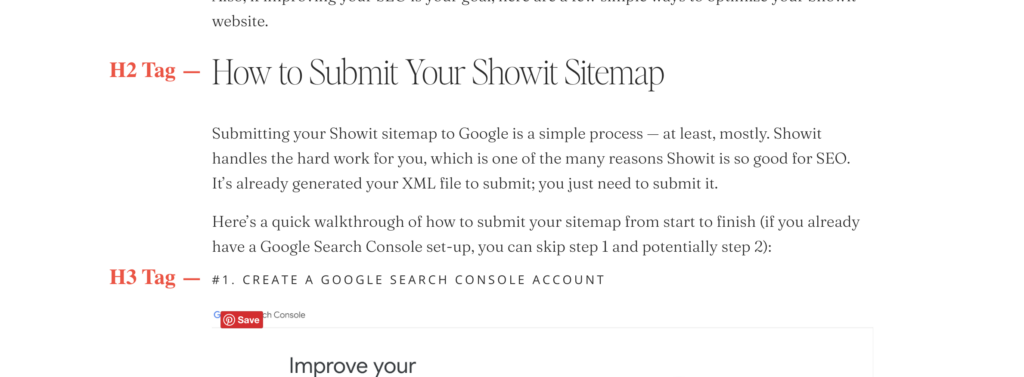Every page on your website has a structure, and in that structure are different headers that help your audience navigate and understand the content of your page. However, user experience and readability are not the only two benefits of having headers on your web pages.
Headers allow Google to recognize the main and supporting topics on your page. While there should only be one H1 for each page, I often get the question, “How many H2 tags per page are good for SEO?”
To be completely honest, there is no limit to the number of H2s on a page, nor is there a “perfect” number that helps you rank. Instead, it’s better to use them appropriately to create a hierarchy of information on your page.
What Are H2 Tags?

H2 tags or “heading 2” is an HTML element that marks a sub-heading (a mini-headline or text that supports your main heading or H1) in your text and on your page. H2s are bigger than your normal paragraph content but are smaller than your H1 tag.
H2s help you break down your webpage or content into smaller, more manageable sections that help with navigation and readability.
How Long Should an H2 Tag Be?
An H2 tag doesn’t have a specific length, but it should always support and relate to your main H1 tag. It should also describe what the section of your webpage or content will be about.
For example, your header could be something as simple as “What are H2 Tags,” or it could be longer like “How to Use H2 Tags in Your Blog Posts.” It ultimately depends on the content of your page and the purpose of the specific section.
Why Are H2 Tags Important for SEO?
H2 tags are a way to structure your webpage and tell Google (and readers) what the page is about. Headers allow you to show which information is the most important and which is the least important (or relevant).
H2s are perfect for supporting your H1 tags or creating a subsection containing H3s, a sub-heading that further breaks down content under H2s.
Following a clear page structure (aka using headers) is important for user experience. It allows your pages and content to be skimmable and accessible to website visitors (and search engines).
For best SEO results, you can use your headers to naturally mention your primary and supporting keywords for your page and improve your website and page ranking in Google Search.
Although it may sound foreign, H2s and headers are not complicated and are found on every web page. Using them correctly comes with familiarity and practice, and if you ever need help optimizing your website, reach out to us at Âme Creatives — we’re here to help!
About Âme Creatives
I’m Kelli, an SEO Strategist & Showit Web Designer — I’m on a mission to help female entrepreneurs (like you) have a purpose-driven, strategically optimized website that helps you be SEEN, HEARD, and PAID. It’s about more than just pretty websites, keywords and first-page status; it’s about giving your brand the spotlight it deserves by bringing in your ideal audience organically. Ready to take the next step? Send me a message!




Comments +